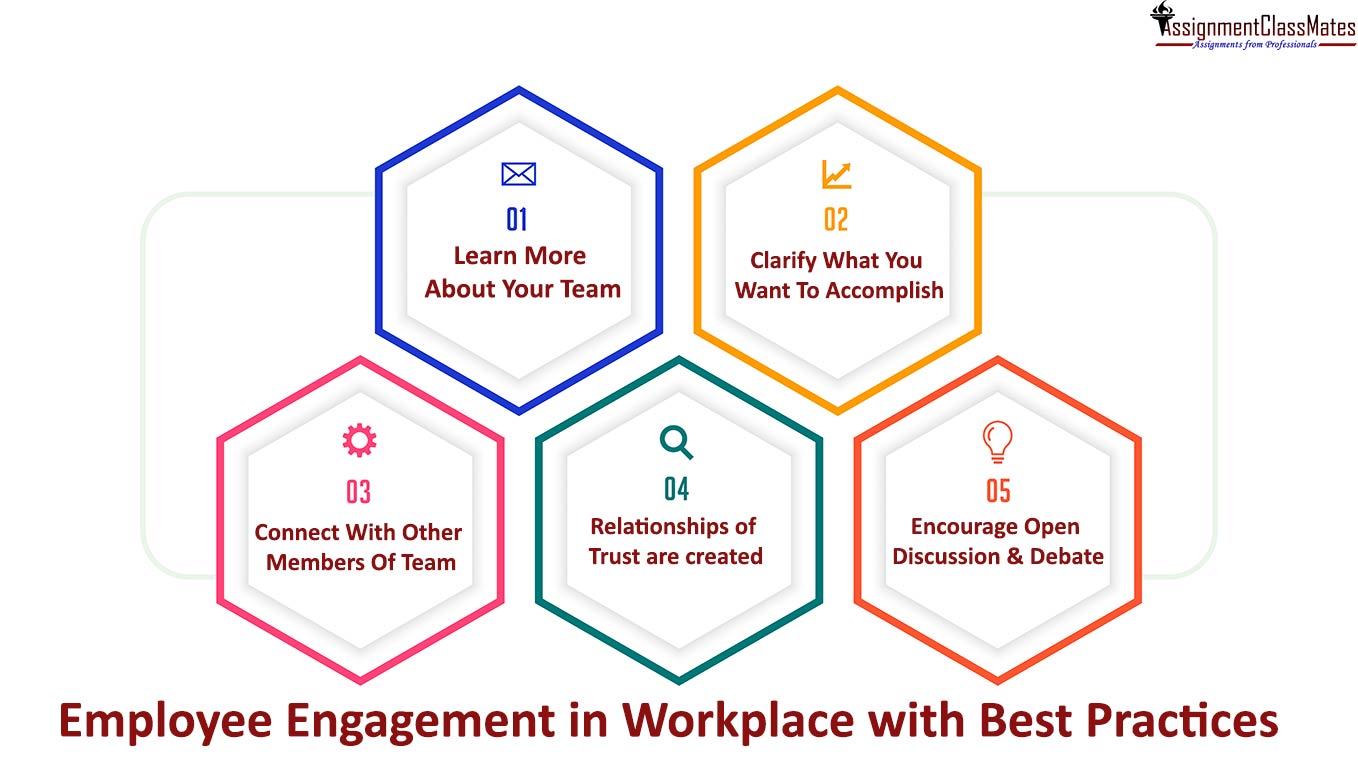Employee Engagement in Workplace with Best Practices
Meaning of Employee engagement
An HR term, employee engagement refers to the amount of passion and devotion a person has for their job. Employees that are engaged care about their job and the company's performance, and they believe that their efforts make a difference in the company's performance. Engagement is more than just a salary to an engaged employee, who sees their well-being as being related to their performance, and thus vital to the success of their organization.

Engage Employment and in workplace
A company's performance depends on employee engagement, which has a direct relationship to work satisfaction and staff morale. To create and maintain employee engagement, communication is crucial. For example, employers may communicate objectives, give prizes and promotions for good work, keep employees informed about the company's success and provide frequent feedback to employees to increase employee engagement. Employee engagement is the degree to which employees have a mental and emotional connection to their workplace. The Gallup Organization defines engaged employees as individuals that are actively interested in their job, are passionate about it, and are dedicated towards it.
Different Ways to Achieve Employee Engagement
- The best engagement practices are as follows:
- Learn More About Your Team - It may seem obvious, but people are important. Instead of robots, we use real people, each with their unique personality, wants, and desires, as well as their unique expectations. The majority of people prefer to spend time with their co-workers than with their family and friends.
- Clarify What You Want To Accomplish -Everyone wants to know what's expected of them and what they're responsible for. Employees begin to question whether or not they are executing their jobs correctly, which can lead to concern over their job security as a result.
- Connect With Other Members Of Your Team -A company's health and team morale depend on communication. It's always vital to keep team members informed, but excellent internal communication goes beyond giving information. To motivate their employees, managers must ensure that the channels of communication remain open. Employee engagement is hampered by poor communication.
- Relationships of trust are created -Mutual trust encourages employees to be more productive, energetic, and collaborative with their coworkers. They also stay with their employers longer than employees in low-trust organizations. What employee engagement best practices do you use to establish trust with your team? Assignment Help Companies with a high level of trust hold their employees accountable but without micromanagement. Because of this, people are treated as responsible adults.
- Encourage Open Discussion And Debate -Best practices for employee engagement include listening. Being a manager does not imply that you know more than the rest of the world knows. Why squander this great source of information that your team has accumulated over the years? A good leader pays attention to what others have to say about him. Inquire about the thoughts of your team members and reply swiftly to their suggestions and queries. If nothing else, they'll feel appreciated and, who knows, you'll learn something new.
Conclusion
Businesses are only as good as their employees, and if no one follows employee engagement best practices, there will be chaos and inefficiency as a result. People must grasp a company's vision and principles and operate in a way that is consistent with the company's ethos. When a company expands, it makes sense for them to establish best practices. This involves taking into account the team's requirements and incentives. As well as concentrating on the organization's efficiency and procedures, it's important to include employee engagement best practices within the organization. If you don't take employee involvement into account, best practices are little more than managerial directives.



